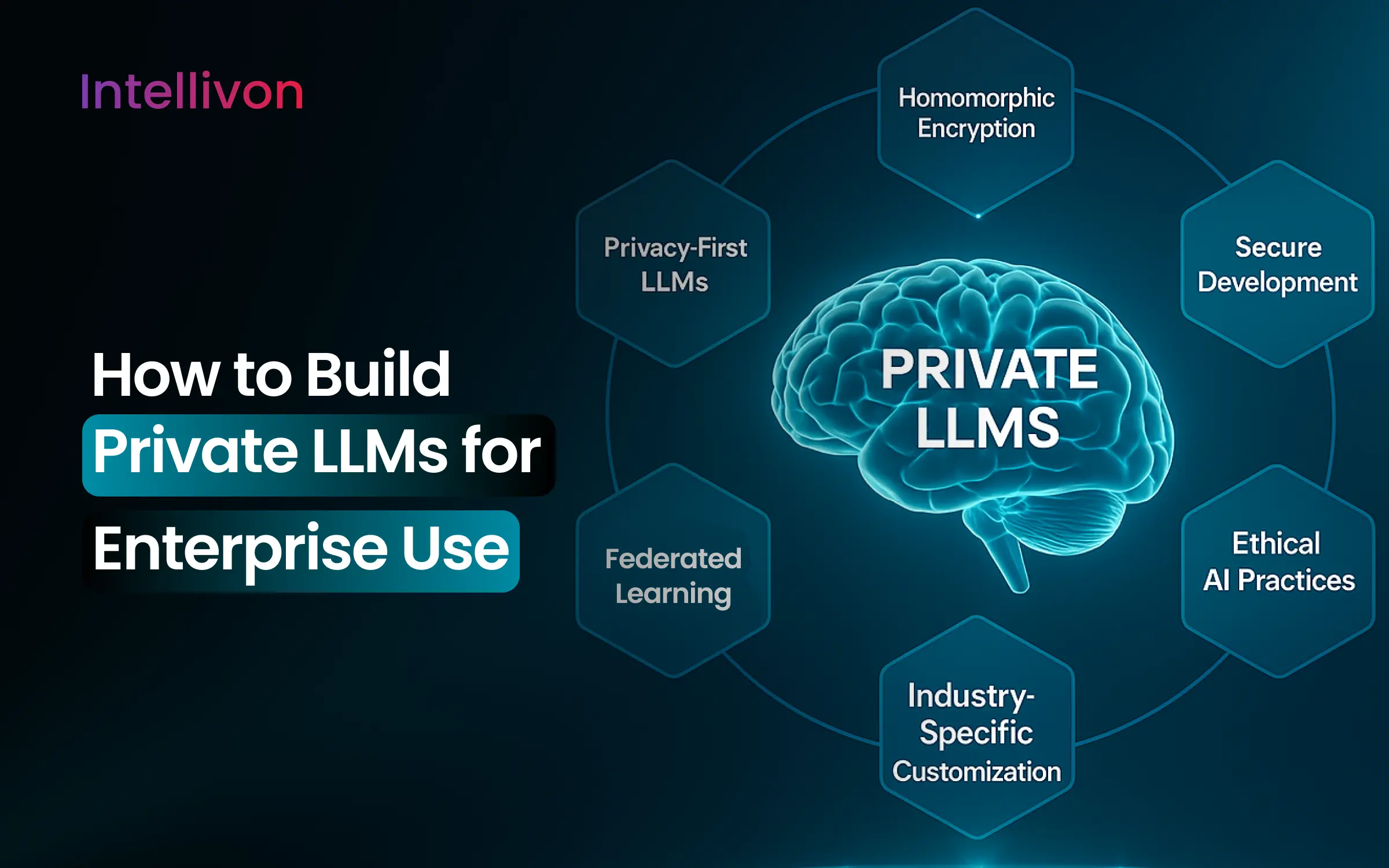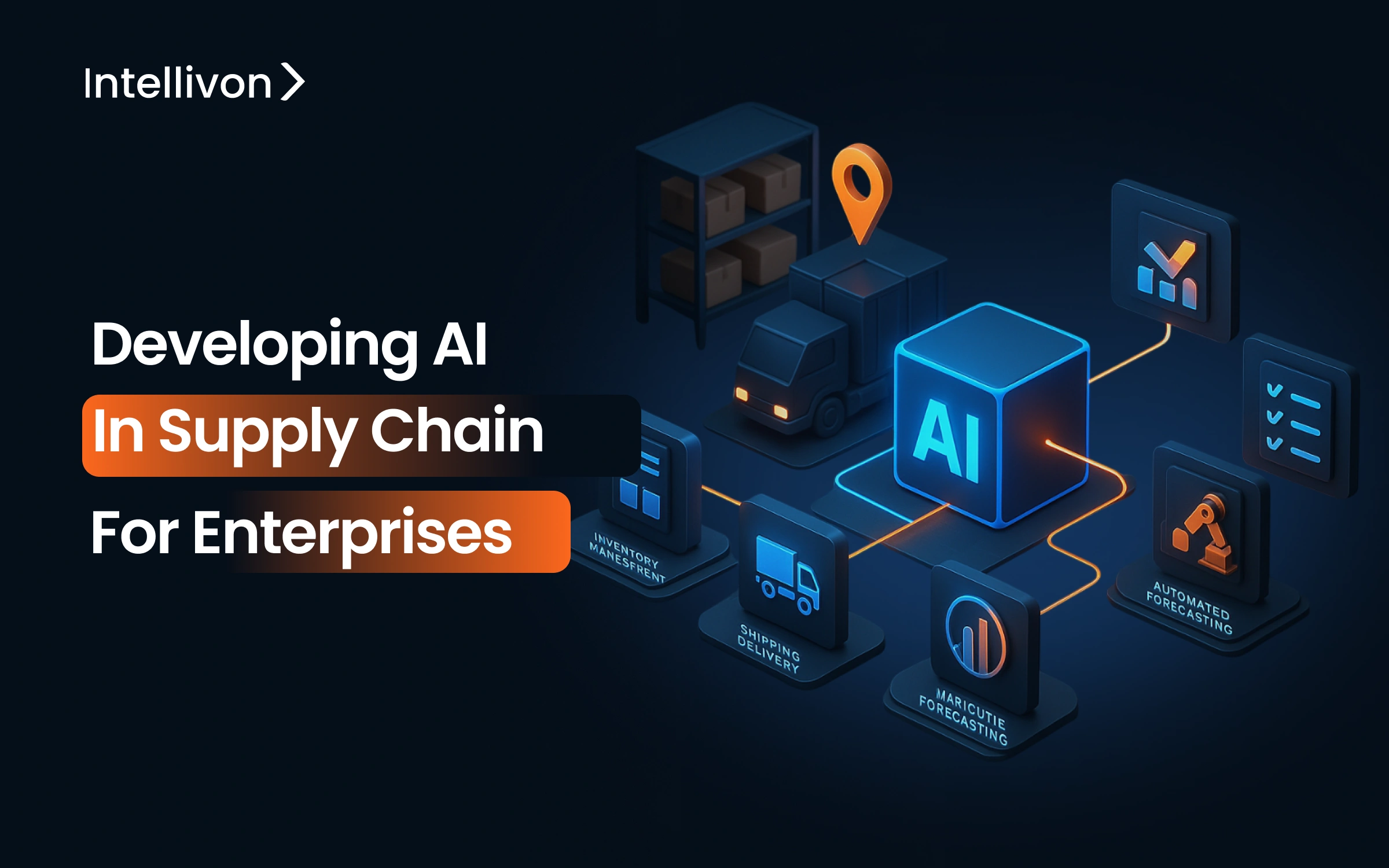The modern supply chain is under constant pressure—from rising customer expectations to unpredictable global disruptions. Traditional systems, often reactive and siloed, struggle to keep up with the speed and complexity of today’s commerce.
This is where Artificial Intelligence (AI) comes in. For enterprise supply chains, AI is not just an optimization tool—it’s a transformative force that drives predictive intelligence, automation, and agility. In this article, we explore how enterprises can strategically develop and implement AI within their supply chains to gain a sustainable competitive advantage.
Understanding AI in the Supply Chain Context
AI in the supply chain refers to the use of intelligent algorithms and data-driven models to automate, enhance, or optimize decision-making processes. These models learn from vast datasets—ranging from sales trends to shipping logs—to forecast demand, route logistics, and detect risks faster than human teams ever could.
Unlike traditional automation, which follows predefined rules, AI systems adapt and improve over time. They uncover patterns in real-time, making the entire supply chain more responsive and resilient.
Stakeholders impacted include logistics managers, procurement officers, inventory planners, and even customer support teams.
Key Areas of AI Application in Enterprise Supply Chains
Demand Forecasting
AI models use machine learning to predict future product demand based on historical data, current trends, market dynamics, and even weather patterns. This enables accurate production planning and reduces stockouts or overproduction.
Inventory Management
AI dynamically adjusts stock levels by analyzing sales velocity, seasonality, and regional demand. Combined with IoT sensors in warehouses, it can automate stock replenishment and reduce carrying costs.
Procurement Optimization
From supplier selection to automated contract reviews, AI tools evaluate multiple variables—price, quality, lead time, geopolitical risks—to optimize procurement strategies.
Logistics & Route Planning
AI-powered logistics engines calculate the most efficient delivery routes, considering traffic, fuel costs, and delivery windows. This not only improves speed but also reduces carbon footprint.
Supplier Risk Management
AI assesses risks by analyzing supplier behavior, financial health, global news, and compliance records. Enterprises can predict disruptions and diversify suppliers accordingly.
Strategic Development of AI Systems in Supply Chain
Setting Goals and KPIs
Before developing AI models, define strategic objectives: reduced costs, improved customer satisfaction, faster delivery times. Set measurable KPIs such as forecast accuracy, inventory turnover, and logistics cost per order.
Data Collection and Integration
AI thrives on data. Enterprises need to integrate datasets from ERP systems, CRM tools, IoT devices, and external data sources. Clean, standardized, and real-time data is essential for accurate model training.
Choosing the Right AI Technologies
Select technologies based on needs:
- Machine Learning (ML) for predictions
- Natural Language Processing (NLP) for document analysis
- Computer Vision for warehouse automation
Use platforms like AWS SageMaker, Google Vertex AI, or SAP Business AI, depending on your enterprise ecosystem.
Building and Training AI Models
Start small. Build pilot models using labeled data. Iterate with supervised learning, then evolve toward unsupervised and reinforcement learning as confidence grows.
Model training involves:
- Feature selection
- Data splitting (training/validation/test)
- Evaluation metrics like MAE, RMSE, F1 Score
Implementation Process for AI Supply Chain Projects
Pilot Testing and Prototyping
Build a minimum viable product (MVP) to demonstrate AI’s potential. Focus on one pain point—like late deliveries—and show improvement through a limited deployment.
Change Management and Training
AI implementation often meets resistance. Invest in employee training, explain the “why” behind AI, and appoint AI champions across departments to facilitate adoption.
Scaling AI Across the Supply Chain
Once validated, expand the AI solution across warehouses, regions, or business units. Ensure infrastructure—cloud or on-premises—can support scaling.
Performance Monitoring and Optimization
Use real-time dashboards to monitor model performance. Incorporate feedback loops and retrain models periodically to adapt to market changes or new data.
Benefits of AI in Enterprise Supply Chains
- Improved Forecast Accuracy: Better alignment between supply and demand
- Lower Operational Costs: Automation reduces manual errors and resource waste
- Faster Response Times: Real-time analytics enables agile decision-making
- Risk Reduction: Predictive insights help avoid disruptions
- Sustainability Gains: Optimized routes and inventory reduce environmental impact
Challenges and Risks in AI Deployment
- Data Privacy: Compliance with GDPR, CCPA, and other regulations
- Bias and Ethics: Poor training data can lead to biased outcomes
- Integration with Legacy Systems: Old infrastructure may not support AI
- Cost of Implementation: Upfront costs can be high, especially for custom AI solutions
Overcoming these challenges requires governance frameworks, strong data practices, and executive buy-in.
Case Studies: Enterprises Using AI in Supply Chain
- Amazon: Uses AI to predict demand, automate fulfillment, and plan delivery routes
- Unilever: Employs AI for demand sensing and inventory optimization
- DHL: Implements AI in route optimization and warehouse robotics
- IBM: Watson AI helps businesses identify supply chain risks in real-time
These companies show that with the right strategy, AI can create resilient, intelligent supply chains.
Future Trends in AI for Supply Chain Management
- Autonomous Supply Chains: Fully AI-managed networks with minimal human intervention
- Generative AI for Planning: Using large language models to simulate future scenarios
- AI-Blockchain Integration: Enhancing traceability and trust
- Sustainability-Focused AI: Optimization for carbon footprint and ethical sourcing
Enterprises investing now will be best positioned for the next wave of innovation.
FAQs: People Also Ask
How does AI improve supply chain visibility?
AI provides real-time data on inventory, orders, and shipments, allowing stakeholders to detect bottlenecks and delays proactively.
What types of AI are used in logistics?
Machine learning for demand and route optimization, computer vision for automated inspections, and NLP for document processing.
Can small enterprises use AI in supply chains?
Yes, especially via cloud-based AI services that are scalable and cost-effective. Start with small applications like demand forecasting.
What are the risks of AI in supply chain management?
Key risks include data bias, over-automation, lack of transparency, and high initial investment costs.
What ROI can businesses expect from AI in supply chains?
While results vary, enterprises often see 15–30% cost savings, improved delivery speed, and better service levels within a year of deployment.
Conclusion
AI is no longer a futuristic concept—it’s a competitive necessity in today’s supply chain landscape. By enabling intelligent automation, predictive insights, and resilient operations, AI equips enterprises to meet both current demands and future disruptions.
Success lies in a thoughtful approach: start small, focus on data, and ensure collaboration across departments. The journey to an AI-enabled supply chain is complex but rewarding—and the time to begin is now.




